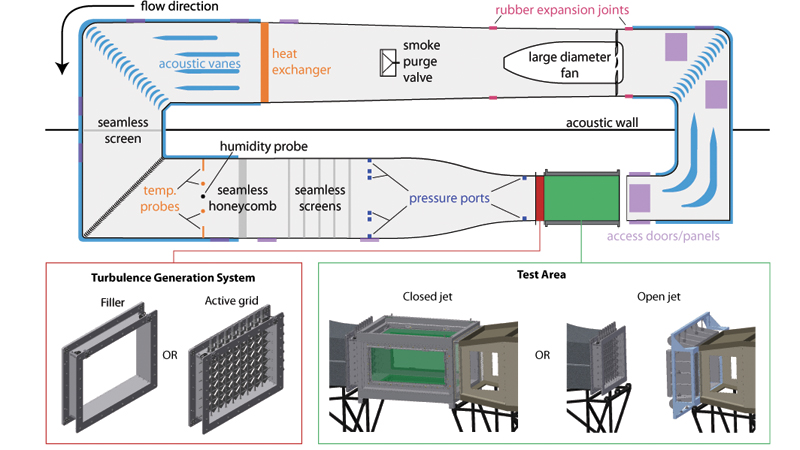Engineering news
Scientists have started conducting experiments in a new, innovative wind tunnel recently built at Stanford University in California. The idea is to study how birds fly so well in both calm and turbulent air – and to use that knowledge to make better drones.
Daniel Quinn, an aerospace engineer at the University of Virginia and one of the researchers who worked on the tunnel, says that birds are far more manoeuvrable and stable in wind gusts than even the best flying robots.
“Birds can morph their wings, swoop and dive, hover, then land on a telephone wire; they can literally fly circles around our robots,” he adds.
The wind tunnel can produce smooth air flows like those that occur in the upper atmosphere as well as chaotic flows as found at lower levels in forests or in streets flanked by buildings on both sides.
The tunnel is 15.1m long, 5.2m wide and 4m high. The team can produce air speeds up to 50ms−1 in its rectangular test section. For that, a large-diameter fan drives air through a series of flow-conditioning elements and then through a contraction into the test section, to create low-turbulent air.
There is also a grid made up of spinning diamond-shaped vanes that can inject turbulent air up to an intensity of 45%.

A diagram of the closed-circuit air tunnel layout at Stanford University and the various elements to condition the air flow
The system allows the researchers to position gusts to affect birds flying in the wind tunnel in real time. They can watch how birds respond to varying conditions using high-speed stereo fluoroscopy, essentially a 3D X-ray video, which takes images at 1,000 frames per second from two angles. This data can be used to create a 3D reconstruction of the bird’s skeleton as it flies.
Quinn says that “bird-like manoeuvrability” would be ideal for robots designed for product delivery, mapping and surveillance, or search-and-rescue missions.
Mirko Kovac, a roboticist at Imperial College London who was not involved in the research, says that wind tunnels such as this will help to improve the understanding of free-flight behaviours, “which are of particular importance in the study of flight dynamics and interaction principles when flying in turbulent flow”.
Kovac does see value in the new facility, however, he adds, robots are unlikely to have “the exact same shape and mechanical design as the bird”.
On the other hand, he says, one can flip this around: because robots can be equally useful to study questions in biology by emulating “biophysical principles” of animals in flight.